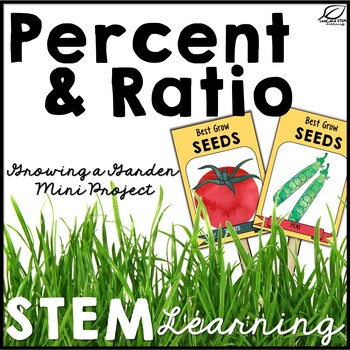Spring Math STEM Project: Ratios and Percents | Printable & Google Digital
- PDF
- Google Apps™

What educators are saying
Also included in
- Find rigorous and well-crafted proportionality, ratio, rate, and percent proportions materials that are perfect for your students! Between the resources in this bundle, you will find real-word word problems, strip diagrams (tape models), ratio tables, graphs, and models to help your students fullyPrice $25.00Original Price $49.25Save $24.25
- This is a growing bundle! Although it is not yet complete, as new resources are added, you will be able to download an updated file with all the new items at no additional cost.These materials support learners in 6th grade math with centers and stations activities, interactive notebook materials, foPrice $145.00Original Price $250.50Save $105.50
Description
This STEM project with a math emphasis is great for middle school students to review ratios, rates, percents, and percent bar graphs! Use anytime, but especially during Spring and Easter time, this math mini project is a great way to bring some fun and real-world application into your middle school math classroom.
Students will plan a garden using realistic data researched from planting almanacs to decide where to plant tomatoes, carrots, lettuce, and other veggies. Once students design their garden, they will use it to determine ratios and percentages based on the information.
This project is easy to differentiate for your students to make it more or less challenging. Take a look at the preview to see everything included!
NEW ADDITION! This resource now includes a Google Slides version so your students can work digitally!
=======================================================
More from Leaf and STEM Learning online
=======================================================
© LD Helfer, 2017 All Rights Reserved
This item is also bound by copyright laws and redistributing, editing, selling, or posting this item (or any part thereof) on the Internet are all strictly prohibited without first gaining permission from the author. Violations are subject to the penalties of the Digital Millennium Copyright Act.







